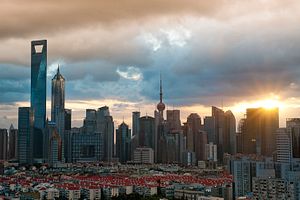Earlier this month, the Chinese government nearly doubled the size of the Shanghai Free Trade Zone, opening a new area to attract high-tech businesses. This latest addition is to be home to Tesla’s first overseas factory, a testing ground for looser financial policies, as well as a new port of entry for commercial exchanges on the mainland. Chinese leaders have expressed their hope that the expanded area can help deepen China’s trade liberalization and reforms.
Shanghai’s pilot program was China’s first free trade zone when it opened its doors six years ago; today it hosts more than 50,000 member firms, with a nearly even split between foreign and domestic companies. Following the Shanghai FTZ, other free trade zones have opened across China, intended to be vehicles of market reforms and growth for the economy.
Separately, China also implemented a new visa type in 2018 in a bid to attract foreigners who do not have the often elusive or hard-to-come-by work permit. The new visa, sometimes called the entrepreneurship visa or the start-up visa, is initially valid for one year with the possibility of renewal. To be eligible, applicants must be foreign graduates from Chinese universities and/or be planning to make investments or start a business in Shanghai. Applicants are required to pitch developed business plans and present any certificates issued by incubators, technology parks, or economic zones.
This new visa policy is just one among more than 20 visa initiatives launched in Shanghai to both diversify and streamline the applications of foreigners seeking entry into China. Like many pilot programs in China, this scheme has been emulated elsewhere, as in Chengdu, though it may still emerge in other cities as well as China seeks to establish itself as a global hub for innovation. Though it remains unclear how many people have taken advantage of this visa type, recent statistics indicate that around 215,000 foreigners are working in Shanghai, accounting for nearly a quarter of China’s foreign worker population.
Even as China has sought to boost its economy with some of these initiatives, its growth has still slowed. Industrial output last month cooled more than expected and China’s 2019 second quarter growth dipped to 6.2 percent, its lowest rate since 1992. In early August, China devalued its currency, the renminbi, prompting the U.S. Treasury to formally designate the country as a currency manipulator. The label had also previously been touted by China critics on both sides of the aisle.
These latest developments have taken place against the looming backdrop of a protracted U.S.-China trade war and a souring of American sentiment vis-a-vis China. Trade talks between the two sides have come in fits and starts, and in turn have fueled a sense of uncertainty among United States and other multinational firms operating in China. “The U.S. business community in China […] can no longer be relied upon to be a positive anchor” for the overall relationship, according the American Chamber of Commerce in China.
Recently surveys conducted by the AmCham China and the U.S.-China Business Council both found that nearly three-quarters of responding firms operating in China were negatively impacted by the current trade and diplomatic tensions. Almost 40 percent of respondents are considering or have relocated manufacturing outside of China, based on AmCham China results. Moreover, the vast majority of companies remain concerned by Chinese policies that favor and protect domestic firms.
While the seemingly widening gap between the U.S. and Chinese positions on trade has undeniable consequences for the international economy, the chasm between Washington and Beijing may provide diversification opportunities for China to appeal to other Western and emerging markets.
Still, the changing business and regulatory environment, coupled with an increasingly unpredictable political relationship, does not exactly foretell smooth roads ahead. Added external squeezing is unlikely to move China to a more amenable negotiating position. In the meantime, it is likely too early to tell if China’s new visa policies and increasingly expansive free trade zones can offset the country’s economic pressures.

































